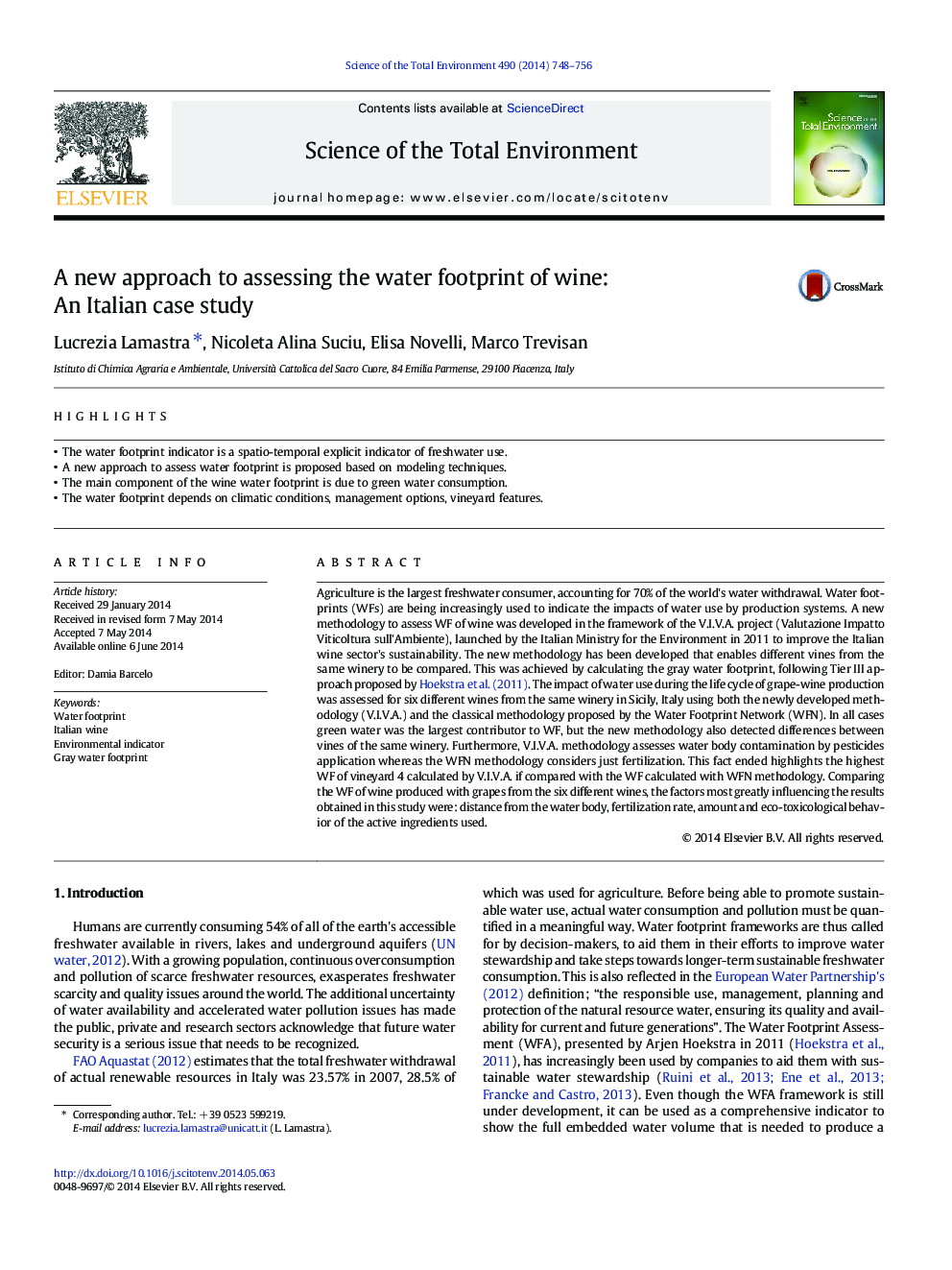| کد مقاله | کد نشریه | سال انتشار | مقاله انگلیسی | نسخه تمام متن |
|---|---|---|---|---|
| 6329242 | 1619780 | 2014 | 9 صفحه PDF | دانلود رایگان |
- The water footprint indicator is a spatio-temporal explicit indicator of freshwater use.
- A new approach to assess water footprint is proposed based on modeling techniques.
- The main component of the wine water footprint is due to green water consumption.
- The water footprint depends on climatic conditions, management options, vineyard features.
Agriculture is the largest freshwater consumer, accounting for 70% of the world's water withdrawal. Water footprints (WFs) are being increasingly used to indicate the impacts of water use by production systems. A new methodology to assess WF of wine was developed in the framework of the V.I.V.A. project (Valutazione Impatto Viticoltura sull'Ambiente), launched by the Italian Ministry for the Environment in 2011 to improve the Italian wine sector's sustainability. The new methodology has been developed that enables different vines from the same winery to be compared. This was achieved by calculating the gray water footprint, following Tier III approach proposed by Hoekstra et al. (2011). The impact of water use during the life cycle of grape-wine production was assessed for six different wines from the same winery in Sicily, Italy using both the newly developed methodology (V.I.V.A.) and the classical methodology proposed by the Water Footprint Network (WFN). In all cases green water was the largest contributor to WF, but the new methodology also detected differences between vines of the same winery. Furthermore, V.I.V.A. methodology assesses water body contamination by pesticides application whereas the WFN methodology considers just fertilization. This fact ended highlights the highest WF of vineyard 4 calculated by V.I.V.A. if compared with the WF calculated with WFN methodology. Comparing the WF of wine produced with grapes from the six different wines, the factors most greatly influencing the results obtained in this study were: distance from the water body, fertilization rate, amount and eco-toxicological behavior of the active ingredients used.
Journal: Science of The Total Environment - Volume 490, 15 August 2014, Pages 748-756
